-
 Bitcoin
Bitcoin $107,100.2009
-0.67% -
 Ethereum
Ethereum $2,438.7946
0.00% -
 Tether USDt
Tether USDt $1.0000
-0.04% -
 XRP
XRP $2.1506
-2.64% -
 BNB
BNB $643.4261
-0.64% -
 Solana
Solana $142.8432
-3.12% -
 USDC
USDC $0.9996
-0.02% -
 TRON
TRON $0.2713
-0.28% -
 Dogecoin
Dogecoin $0.1598
-4.15% -
 Cardano
Cardano $0.5553
-4.61% -
 Hyperliquid
Hyperliquid $37.4949
-3.45% -
 Bitcoin Cash
Bitcoin Cash $494.8287
2.75% -
 Sui
Sui $2.6305
-7.06% -
 Chainlink
Chainlink $13.0534
-1.94% -
 UNUS SED LEO
UNUS SED LEO $8.9960
0.02% -
 Stellar
Stellar $0.2361
-3.87% -
 Avalanche
Avalanche $17.2273
-4.80% -
 Toncoin
Toncoin $2.8106
-3.27% -
 Shiba Inu
Shiba Inu $0.0...01130
-3.71% -
 Litecoin
Litecoin $84.4367
-0.99% -
 Hedera
Hedera $0.1442
-6.40% -
 Monero
Monero $314.6218
-1.70% -
 Dai
Dai $0.9998
-0.01% -
 Ethena USDe
Ethena USDe $1.0000
-0.02% -
 Polkadot
Polkadot $3.2923
-4.40% -
 Bitget Token
Bitget Token $4.4284
0.60% -
 Uniswap
Uniswap $6.8367
-4.04% -
 Pi
Pi $0.5559
-13.86% -
 Pepe
Pepe $0.0...09257
-8.51% -
 Aave
Aave $254.2527
-3.41%
How to get USDT at a low price through arbitrage trading?
Arbitrage trading exploits USDT price differences across exchanges, requiring speed and high volume; risks include slippage, fees, and security concerns.
Mar 27, 2025 at 08:14 pm
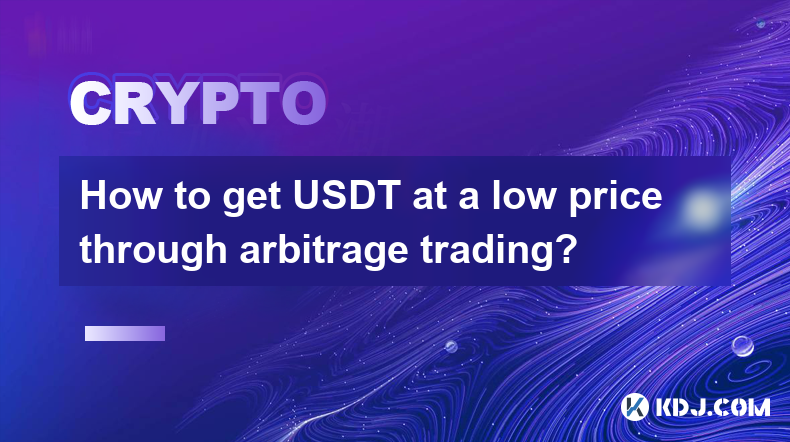
Understanding Arbitrage Trading for USDT
Arbitrage trading exploits price discrepancies of the same asset across different exchanges. In the context of USDT (Tether), this means buying USDT on one exchange where it's cheaper and selling it on another where it's more expensive, profiting from the difference. This requires speed, efficiency, and access to multiple exchanges. The price differences are often small, so high trading volume is necessary to generate significant profits. However, the inherent risks, like slippage and exchange fees, must be carefully considered.
Identifying Price Discrepancies for USDT Arbitrage
Finding profitable arbitrage opportunities requires constant monitoring of USDT prices across various exchanges. Dedicated arbitrage software or platforms can automate this process, providing real-time price comparisons. Manually checking multiple exchange websites is time-consuming and inefficient. Look for exchanges with significant price differences, even a small percentage can be lucrative with large trade volumes. Remember that the difference must be greater than the combined transaction fees and slippage to yield a profit.
Choosing the Right Exchanges for USDT Arbitrage
Selecting reliable and liquid exchanges is crucial. High liquidity ensures you can buy and sell large quantities of USDT quickly without significantly impacting the price. Reputable exchanges with robust security measures are essential to minimize the risk of account compromise or fraud. Consider factors like transaction fees, withdrawal fees, and the exchange's reputation before choosing your trading platforms. Diversification across multiple exchanges can mitigate risk.
Steps Involved in USDT Arbitrage Trading
- Step 1: Identify the Arbitrage Opportunity: Use arbitrage software or manually compare USDT prices across different exchanges. Look for significant price differences.
- Step 2: Transfer Funds: Transfer the necessary funds to the exchange where USDT is cheaper. This might involve transferring fiat currency or another cryptocurrency depending on your exchange's options.
- Step 3: Buy USDT: Purchase USDT on the exchange with the lower price. Ensure you have sufficient funds to cover transaction fees.
- Step 4: Transfer USDT: Transfer the purchased USDT to the exchange where the price is higher. The transfer time varies depending on the blockchain network.
- Step 5: Sell USDT: Sell the USDT on the exchange with the higher price. Again, be aware of transaction fees.
- Step 6: Withdraw Profits: Withdraw your profits to your preferred wallet or bank account.
Managing Risks in USDT Arbitrage Trading
Arbitrage trading, while potentially profitable, carries risks. Slippage, the difference between the expected price and the actual execution price, can significantly reduce profits or even lead to losses. Exchange fees and network transaction fees can also eat into your profits. Market volatility can quickly eliminate arbitrage opportunities. Security risks, such as exchange hacks or account compromises, are also a concern.
Utilizing Arbitrage Software for USDT Trading
Many arbitrage software platforms are available to automate the process. These platforms continuously scan various exchanges for price discrepancies and execute trades automatically. However, be cautious when choosing software, ensuring it's reputable and secure to avoid scams or malware. Understand the fees associated with using the software before committing. Manual verification of opportunities is still recommended before fully automating trades.
Understanding Transaction Fees and Slippage
Transaction fees vary across exchanges and depend on the trading volume and chosen payment method. Slippage occurs when the actual execution price differs from the expected price, often due to market volatility or low liquidity. These factors significantly impact profitability, so it's crucial to factor them into your calculations before initiating a trade. High-frequency trading strategies can help minimize slippage but require sophisticated tools and expertise.
The Importance of Security in USDT Arbitrage
Security is paramount in cryptocurrency trading. Use strong passwords, enable two-factor authentication, and be wary of phishing scams. Only use reputable exchanges with a proven track record of security. Regularly review your account activity to detect any unauthorized transactions. Store your private keys securely offline. Neglecting security can lead to significant financial losses.
Legal and Regulatory Considerations
The legal and regulatory landscape surrounding cryptocurrency arbitrage varies by jurisdiction. It's crucial to understand the applicable laws and regulations in your region before engaging in arbitrage trading. Some jurisdictions may consider arbitrage trading as taxable income, so proper accounting and tax reporting are essential. Consult with a legal and financial professional for guidance.
Scalability and Automation in USDT Arbitrage
As arbitrage opportunities often involve small price differences, high trading volumes are needed for substantial profits. Automation through arbitrage software can help manage large trade volumes efficiently. However, scaling up requires careful planning and risk management to avoid overwhelming your trading capacity. Consider the limitations of your hardware and software, and the potential impact on exchange fees.
Frequently Asked Questions
Q: Is arbitrage trading with USDT profitable?
A: Arbitrage trading can be profitable if executed efficiently and with careful risk management. However, profits are often small, requiring high trading volumes to generate significant returns. Profits are also susceptible to slippage and transaction fees.
Q: What are the risks associated with USDT arbitrage?
A: Risks include slippage, transaction fees, exchange downtime, security breaches, regulatory changes, and market volatility. These can significantly reduce or eliminate profits.
Q: What tools are needed for USDT arbitrage?
A: You'll need accounts on multiple cryptocurrency exchanges, a digital wallet, and potentially arbitrage software to automate the process. You also need a good understanding of cryptocurrency markets.
Q: How can I minimize risks in USDT arbitrage?
A: Use reputable exchanges, employ strong security practices, carefully manage your funds, use arbitrage software cautiously, and diversify your trading across multiple exchanges. Thorough research and risk assessment are crucial.
Q: Is USDT arbitrage legal?
A: The legality of USDT arbitrage depends on your jurisdiction. Check your local laws and regulations. Tax implications should also be considered.
Disclaimer:info@kdj.com
The information provided is not trading advice. kdj.com does not assume any responsibility for any investments made based on the information provided in this article. Cryptocurrencies are highly volatile and it is highly recommended that you invest with caution after thorough research!
If you believe that the content used on this website infringes your copyright, please contact us immediately (info@kdj.com) and we will delete it promptly.
- Coinbase, Wrapped Tokens, and Base Network: A New Era for Cross-Chain DeFi?
- 2025-06-26 21:10:14
- BNB Price Check: Can Binance Coin Reserves Fuel a Rally to $800?
- 2025-06-26 20:25:12
- PEPD, Memes, and Ethereum: A New Era of Meme Utility?
- 2025-06-26 20:25:12
- Pepe Dollar vs. Pepecoin: The Meme Coin Evolution
- 2025-06-26 20:50:12
- Fartcoin, Coinbase, and Crypto Mortgages: What in the World?
- 2025-06-26 20:50:12
- Pi Coin, AI Speculation, and Pi2Day 2025: What's the Buzz?
- 2025-06-26 21:30:12
Related knowledge
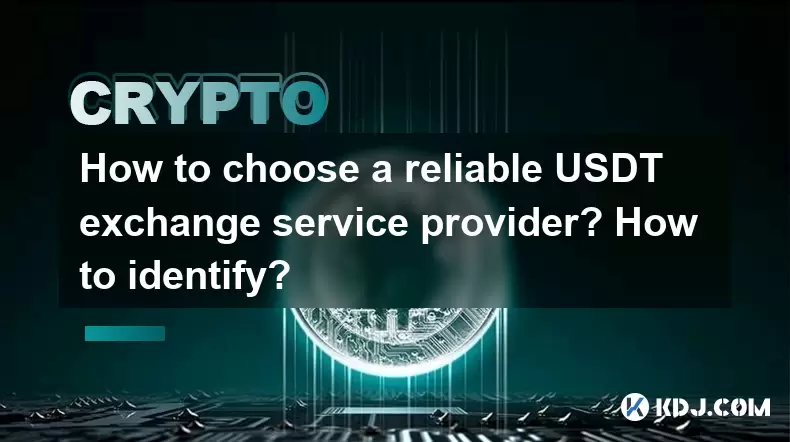
How to choose a reliable USDT exchange service provider? How to identify?
Jun 12,2025 at 03:15pm
Understanding the Role of USDT in Cryptocurrency TradingUSDT (Tether) is one of the most widely used stablecoins in the cryptocurrency market. It is designed to maintain a 1:1 peg with the U.S. dollar, offering traders and investors a way to hedge against volatility while remaining within the crypto ecosystem. Choosing a reliable USDT exchange service p...
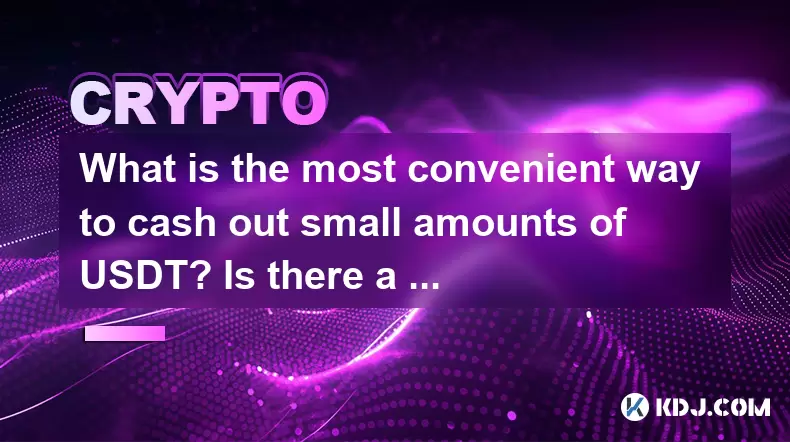
What is the most convenient way to cash out small amounts of USDT? Is there a shortcut?
Jun 11,2025 at 11:00pm
Understanding the Need to Cash Out Small USDT AmountsCashing out small amounts of USDT can be a challenge for many crypto users. Traditional methods often involve high fees, minimum withdrawal limits, or cumbersome verification processes that make it inefficient for small transactions. The key is to find a method that balances speed, cost, and convenien...
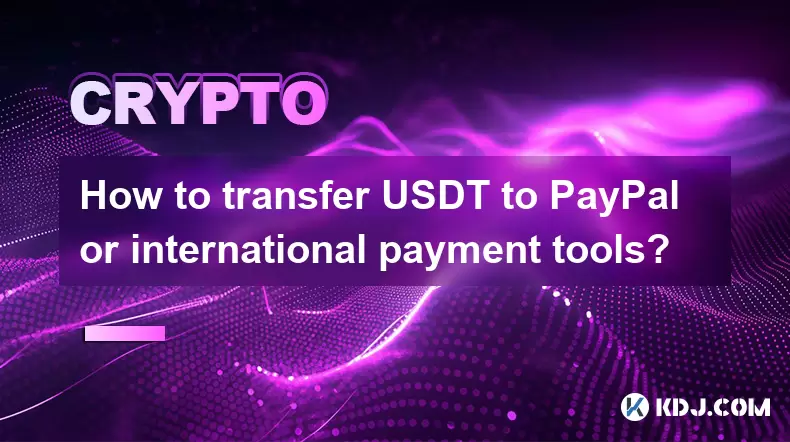
How to transfer USDT to PayPal or international payment tools?
Jun 15,2025 at 05:28am
Understanding the Basics of USDT and PayPal IntegrationUSDT (Tether) is a stablecoin pegged to the US dollar, offering blockchain-based value transfer with minimal volatility. PayPal, on the other hand, is a centralized digital wallet that facilitates fiat currency transactions globally. Direct integration between USDT and PayPal does not exist due to t...
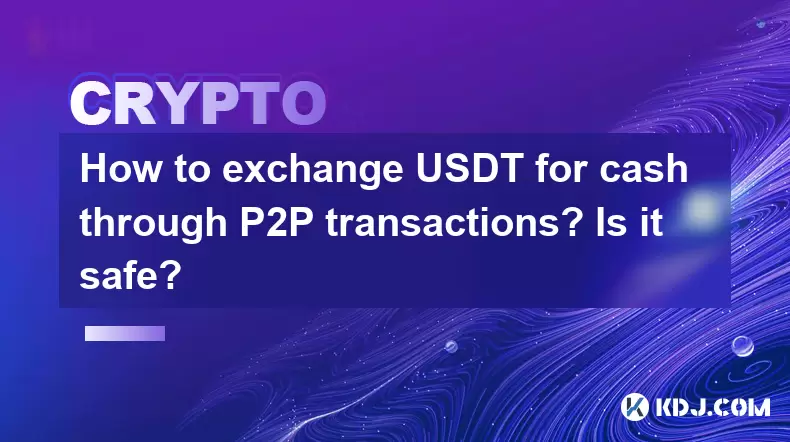
How to exchange USDT for cash through P2P transactions? Is it safe?
Jun 18,2025 at 07:56am
Understanding USDT and P2P TransactionsTether (USDT) is a stablecoin pegged to the value of the US dollar, making it a popular choice for users who want to avoid the volatility of other cryptocurrencies while still participating in the crypto ecosystem. Peer-to-peer (P2P) transactions allow individuals to trade directly with each other without going thr...
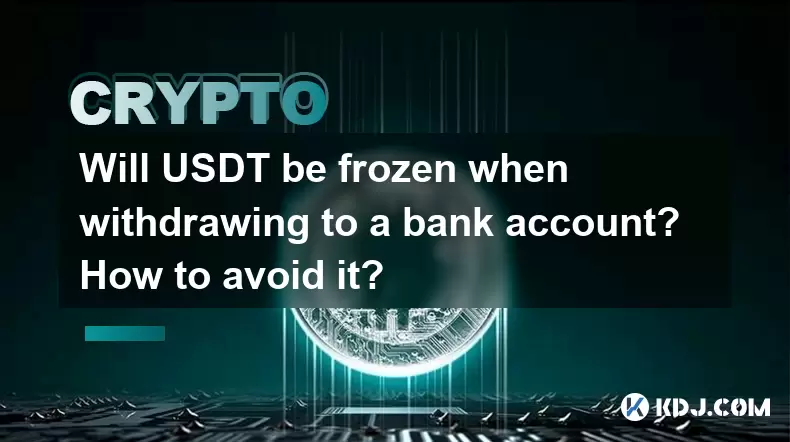
Will USDT be frozen when withdrawing to a bank account? How to avoid it?
Jun 15,2025 at 10:03am
Understanding USDT Withdrawals and Bank Account Freezing RisksWhen users decide to withdraw USDT (Tether) to a bank account, one of the most common concerns is whether their funds will be frozen during the process. This concern stems from real-life cases where individuals have encountered delays or restrictions when converting digital assets into fiat c...
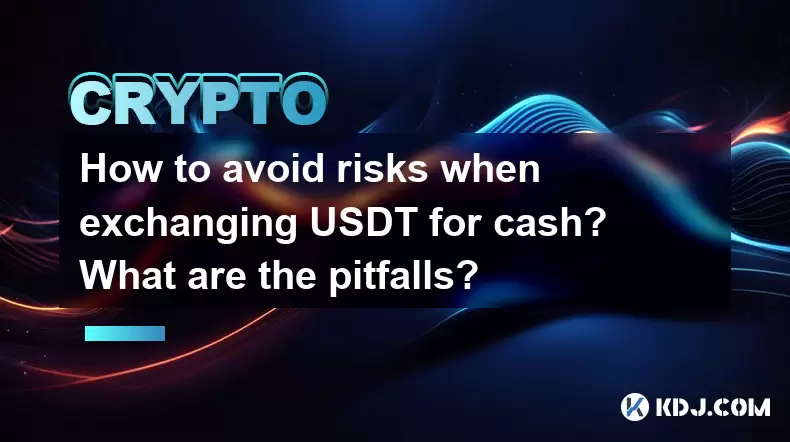
How to avoid risks when exchanging USDT for cash? What are the pitfalls?
Jun 11,2025 at 08:14pm
Understanding the Risks of Exchanging USDT for CashWhen exchanging USDT (Tether) for cash, users must be aware of the potential risks involved. As a stablecoin pegged to the US dollar, USDT is widely used in crypto transactions due to its price stability. However, converting it into fiat currency like USD or CNY can expose users to several pitfalls, inc...

How to choose a reliable USDT exchange service provider? How to identify?
Jun 12,2025 at 03:15pm
Understanding the Role of USDT in Cryptocurrency TradingUSDT (Tether) is one of the most widely used stablecoins in the cryptocurrency market. It is designed to maintain a 1:1 peg with the U.S. dollar, offering traders and investors a way to hedge against volatility while remaining within the crypto ecosystem. Choosing a reliable USDT exchange service p...

What is the most convenient way to cash out small amounts of USDT? Is there a shortcut?
Jun 11,2025 at 11:00pm
Understanding the Need to Cash Out Small USDT AmountsCashing out small amounts of USDT can be a challenge for many crypto users. Traditional methods often involve high fees, minimum withdrawal limits, or cumbersome verification processes that make it inefficient for small transactions. The key is to find a method that balances speed, cost, and convenien...

How to transfer USDT to PayPal or international payment tools?
Jun 15,2025 at 05:28am
Understanding the Basics of USDT and PayPal IntegrationUSDT (Tether) is a stablecoin pegged to the US dollar, offering blockchain-based value transfer with minimal volatility. PayPal, on the other hand, is a centralized digital wallet that facilitates fiat currency transactions globally. Direct integration between USDT and PayPal does not exist due to t...

How to exchange USDT for cash through P2P transactions? Is it safe?
Jun 18,2025 at 07:56am
Understanding USDT and P2P TransactionsTether (USDT) is a stablecoin pegged to the value of the US dollar, making it a popular choice for users who want to avoid the volatility of other cryptocurrencies while still participating in the crypto ecosystem. Peer-to-peer (P2P) transactions allow individuals to trade directly with each other without going thr...

Will USDT be frozen when withdrawing to a bank account? How to avoid it?
Jun 15,2025 at 10:03am
Understanding USDT Withdrawals and Bank Account Freezing RisksWhen users decide to withdraw USDT (Tether) to a bank account, one of the most common concerns is whether their funds will be frozen during the process. This concern stems from real-life cases where individuals have encountered delays or restrictions when converting digital assets into fiat c...

How to avoid risks when exchanging USDT for cash? What are the pitfalls?
Jun 11,2025 at 08:14pm
Understanding the Risks of Exchanging USDT for CashWhen exchanging USDT (Tether) for cash, users must be aware of the potential risks involved. As a stablecoin pegged to the US dollar, USDT is widely used in crypto transactions due to its price stability. However, converting it into fiat currency like USD or CNY can expose users to several pitfalls, inc...
See all articles
























































































